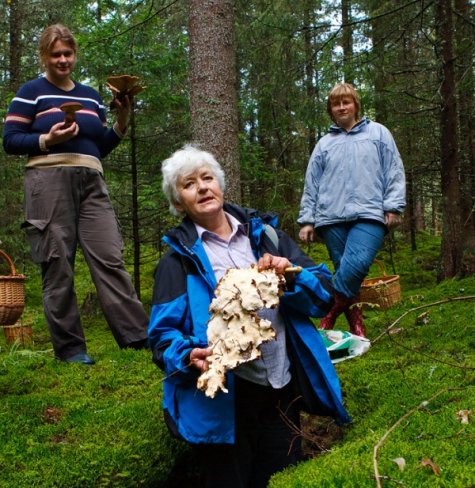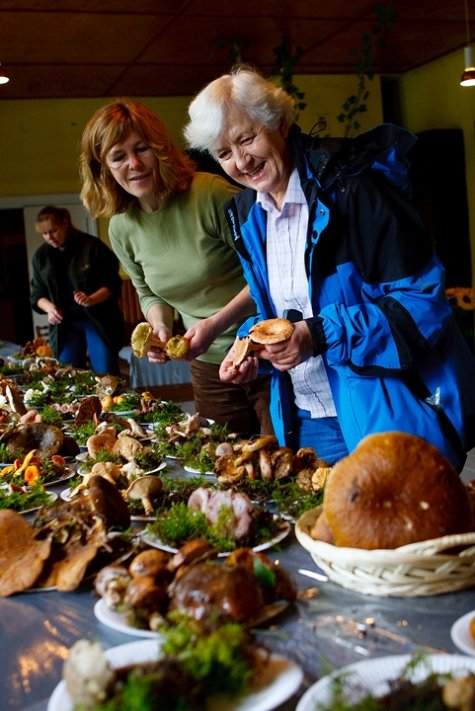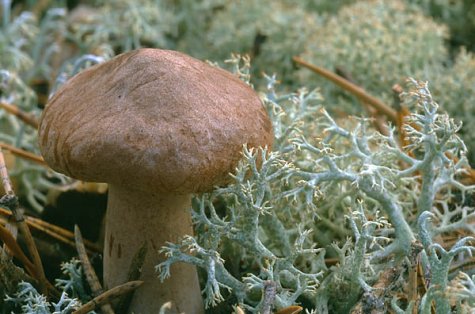Interview by: Toivo Tuberik
Photos: Mats Kangur
Translation: Liis
Mall Vaasma in foreground.
Mall Vaasma [from Estonian University of Life Sciences] will be in Rõuge with her students during the whole mushroom week. There will be two forest rambles each day for interested enthusiasts. And from the forest finds a splendid exhibition will be set up, like last year.
Rufous milkcap.
Where are the best mushroom forests in Estonia?
The first thing is to know what mushrooms you want. If chanterelles, then I would say South-eastern Estonia, if the rufous milkcap (Lactarius rufus), then Lahemaa. The production of mushrooms in our forests was investigated there, and it was found that the most productive species in our forests was in fact the rufous milkcap, then the gipsy mushroom (Rozites caperata) and the copper brittlegill (Russula decolorans). In Raplamaa the most productive species is the honey fungus, Armillaria mellea. The investigation has been published in the Yearbook of the Estonian Naturalist Society (Eesti Loodusuurijate Selts, aastaraamat)no. 68. But all depends on the year: if there are mushrooms, or if there are none at all.
If you are looking for mushrooms to eat, then – rather instinctively – I would say South-eastern Estonia. The forests with the most varied spectrum of species might be on Saaremaa and Hiiumaa.
How many species of fungi can be found in Estonia, for instance on a hundred square meters in an established old forest?
Of the established forests the Järvaselja primeval forest has been thoroughly investigated. It has an area of 17 hectares, and 621 fungus species were found there. And then most microfungi were not included in the count.
Is there a square meter of land anywhere in Estonia without fungi?
No, there can’t unless it is completely sterile. Even after a fire there are soil fungi in the ground, and the fungal mycelium remains. Seashore sand may be without fungi where it is washed by seawater, but at the same time there are aqueous fungi in the sea, and there may even be amphibious fungi, I wouldn’t know about that.

Pine root rot fungus (Heterobasidion annosum).











